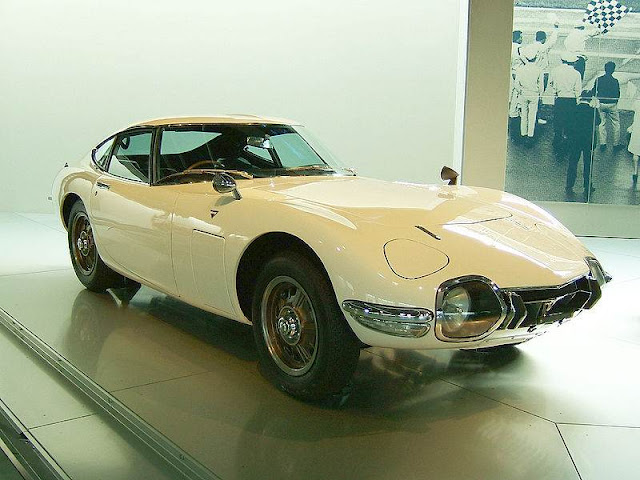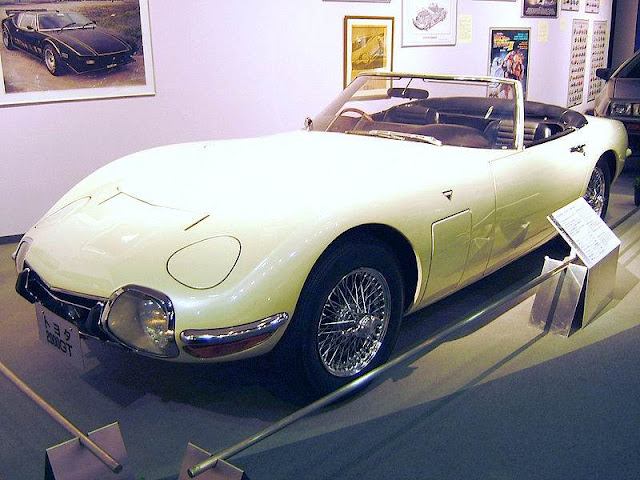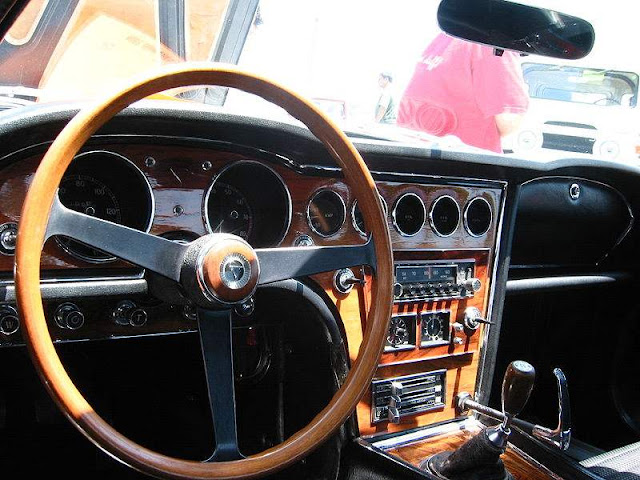 Manufacturer : Honda
Manufacturer : Honda
 Productions : 1981
Productions : 1981
 Engine : Twin cylinder Air-cooled Four-stroke, Single Over Head Cam Parallel twin.
Engine : Twin cylinder Air-cooled Four-stroke, Single Over Head Cam Parallel twin.
 Transmission : -
Transmission : -
Honda introduced several 200 cm³ bikes with similar engines but different body variations in the 1980s. The model introduced in South Africa and Pakistan was known as the CD 200 “Road Master”. It was a detuned version of the Honda CD185 twin. The CD 200 sold more for its looks then performance as its square speedometer, huge front and rear mudguards, twin chrome exhausts, neatly tucked in choke behind handle bars and a chrome plated fuel tank with the Honda logo contributed to an interesting styling.
The bike was a cheap commuter vehicle with a claimed 100 miles (160 km) per gallon and a smooth ride. Too slow for a 200 cm³ bike, its top speed was only 70 mph (112 km/h) as the engine was detuned to keep maintenance cost to a minimum. This bike targeted users who wanted a comfortable cheap transport suitable for long routes with low maintenance. Use of simple drum breaks in rear and front and a single carburetor were other measures used to keep the maintenance low. The bike accelerated hard up to 65 mph (105 km/h); after that it was a flat ride. The engine had to be revved very hard to create any kind of excitement as the bike was too heavy (140 kg) for an engine that produced a modest 16 bhp.
This model suffered from various manufacturing faults like a noisy cam chain and an unreliable electrical starter (later models were upgraded with 12 volts CDI system in the UK.). In the UK the CD200 was affected by legislation restricting learner riders to bikes limited to 125 cm³ and 12bhp. Honda introduced a 125 cm³ Benly after the CD200 was withdrawn.The CD 200 Road Master was sold in South Africa until late 2004 and was used mainly as a courier/delivery bike.It retained the 6 volt electrics and points ignition.
Jeep Willys MA (1941)
 Manufacturer : Jeep
Manufacturer : Jeep
 Productions : 1941
Productions : 1941
 Source : netcarshow.com
Source : netcarshow.com
With modifications and improvements, the Willys Quad became the MA, and later the MB. But the Army, and the world, came to know it as the Jeep®.
Some claimed that the name came from the slurring of the letters “GP,” the military abbreviation for “General Purpose.” Others say the vehicle was named for a popular character named “Eugene the Jeep” in the Popeye cartoon strip. Whatever its origin, the name entered into the American lexicon and, for awhile, served almost as a generic title for off-road vehicles, while the Jeep itself became an icon of the war.
The Willys MA featured a gearshift on the steering column, low side body cutouts, two circular instrument clusters on the dashboard, and a hand brake on the left side. Willys struggled to reduce the weight to the new Army specification of 2,160 lbs. Items removed in order for the MA to reach that goal were reinstalled on the next-generation MB resulting in a final weight of approximately just 400 lbs. above the specifications.
Willys-Overland would build more than 368,000 vehicles, and Ford, under license, some 277,000, for the U.S. Army. The rugged, reliable olive-drab vehicle would forever be known for helping win a world war.
Willys trademarked the “Jeep” name after the war and planned to turn the vehicle into an off-road utility vehicle for the farm – the civilian Universal Jeep. One of Willys’ slogans at the time was “The Sun Never Sets on the Mighty Jeep,” and the company set about making sure the world recognized Willys as the creator of the vehicle.
Tags 1941, Jeep, Willys |
 Manufacturer : Lotus
Manufacturer : Lotus
 Productions : 1965
Productions : 1965
 Engine : 1470 cc engine and a 4-speed gearbox
Engine : 1470 cc engine and a 4-speed gearbox
 Source : netcarshow.com
Source : netcarshow.com
The Lotus Europa or Lotus Europe, a two door mid-engined GT coupé built by Lotus Cars from 1966 to 1975.
The original Lotus Europa used Lotus founder Colin Chapman’s minimalist steel backbone chassis that was first used in the Lotus Elan, while also relying on its fibreglass moulded body for structural strength. The Europa was the first mass-produced mid-engine road car and was based on a prototype built to compete for Henry Ford II’s contract to build a Le Mans race car in the early 1960s.
The Lotus Europa was designed and built to be an embodiment of Chapman’s oft-stated philosophy of automotive design: “Simplify, then add lightness.”
The 4-wheel independent suspension was typical of Chapman’s thinking; the rear suspension consisted of two relatively large trailing arms, one lower locating link per side, and the axles were used as upper locating links; very similar to Formula racing car designs of that era. Aside from the doors, bonnet (hood), and trunk (boot), the body was cast as a single unit of fibreglass.
The car’s handling prompted automotive writers to describe the Europa as the nearest thing to a Formula car for the road.
read more »
Honda Civic Si HFP 2010 Specifications :
Manufacturer : Honda
Productions : 2010
The body is the same buffet of triangles, the engine is the same 2.0 Liter 4 cylinder engine, and the dash board still looks like it belongs on a spaceship. Inside is the same well-appointed, well-equipped, spacious interior Honda has become known for. The seats are bolstered yet comfortable. The cloth feels great, looks good, and will no doubt last as long as the car will. The dashboard does take some getting used to, but I actually found the digital speedometer just below my focal point to be a natural location. The only thing I didn’t like is how the giant windshield left me seeing nothing but black top. Visibility is important, but the only way to know where the corners of the car are is to use google earth and zoom in really close.
Lotus Elan (1962)
 Manufacturer : Lotus
Manufacturer : Lotus
 Productions : 1962
Productions : 1962
 Engine : 4-cylinder with 1558 cc, 4-wheel disc brakes, and 4-wheel independent suspension
Engine : 4-cylinder with 1558 cc, 4-wheel disc brakes, and 4-wheel independent suspension
 Source : netcarshow.com
Source : netcarshow.com
The original Elan was introduced in 1962 as a roadster, although an optional hardtop was offered in 1963 and a coupé version in 1965. It was the first Lotus road car to use the now famous steel backbone chassis with a fibreglass body. At 1500 lb (680 kg), the Elan embodied the Colin Chapman minimum weight design philosophy. Initial versions of the Elan were also available as a kit to be assembled by the customer. The Elan was technologically advanced with a twin-cam 1558 cc engine, 4-wheel disc brakes, and 4-wheel independent suspension. The Lotus-Ford Twin Cam engine was based on Ford’s Kent, with a Lotus-inspired Cosworth alloy twin-cam head. This Lotus-Ford 4-cylinder engine would go on to be used in a number of Lotus production and racing models. An Elan +2 was introduced in 1967 with a longer wheelbase and two more rear seats. The Elan ceased production in 1973 and the Elan +2 in 1975. An estimated total of 17,000 original Elans and Elan +2′s were built. Because of its successful design and technological sophistication, the Elan went on to become Lotus’ first commercial success, reviving a company stretched thin by the more exotic and less commercially successful Elite, and enabling funding of the Lotus success in racing over the next ten years.
This generation of the two seater Elan was famously driven by the character Emma Peel on the British television series The Avengers. In 2004, Sports Car International named the Elan number six on the list of Top Sports Cars of the 1960s. The original version of the car was designed by Ron Hickman, who also designed the first Lotus Europa as part of Lotus’ GT40 project bid and made his fortune having designed the Black & Decker WorkMate.
read more »
Porsche 356 (1948)
 Manufacturer : Porsche
Manufacturer : Porsche
 Productions : 1948
Productions : 1948
 Source : netcarshow.com
Source : netcarshow.com
“I can readily admit that the initiative came through Cisitalia”, said Ferry Porsche on the occasion of his 75th birthday when describing the early days of the Porsche 356. “Back then Cisitalia was building a small sports car with a Fiat engine. So I said to myself: why shouldn’t we do the same thing with VW parts? After all, that is already what we did before the war with the Berlin-Rome car.”
Looking back today, the business risk involved in an enterprise of this kind was almost mind-boggling: The whole of Europe was struggling after a terrible war and demand in the market was primarily for practical and inexpensive cars. And precisely in this situation Ferry Porsche decided to fulfil his dream of building his own sports car – only to find that other aficionados of the automobile shared precisely the same dream.
In spring 1947 Ferry Porsche first expressed his idea to build a sports car using Volkswagen components which, initially code-named the “VW-Sports”, received the construction number 356. The vision of the Porsche Junior Director was to “build the kind of sports car I liked myself”. Ferry Porsche’s engineers, at any rate, were fascinated by the idea of building such a sports car, completing a road-going chassis in February 1948 destined to take up a roadster body made of aluminium. The flat-four power unit, together with the gearbox, suspension, springs and steering, all came from Volkswagen. Weighing just 585 kg or 1,290 lb, this 35-bhp mid-engined roadster had a top speed of 135 km/h or 84 mph. On 8 June 1948 this very first Porsche mid-engine sports car proudly bearing the chassis number 356-001 received official homologation from the authorities through an individual permit granted by the State Government of Carinthia.
 Manufacturer : McLaren
Manufacturer : McLaren
 Productions : 1967-1969
Productions : 1967-1969
 Source : netcarshow.com
Source : netcarshow.com
The McLaren M6A was a racing car developed by driver Bruce McLaren and his Bruce McLaren Motor Racing team for their entry in 1967 Can-Am season. As a replacement for the team’s M1Bs from 1966, the Chevrolet-powered McLaren M6A’s improved design earned Bruce McLaren and his team their first of multiple Can-Am championships. After the McLaren M6A were replaced by the M8A in preparation for 1968, McLaren and technical partner Trojan developed the M6B which was sold to customers for use in Can-Am as well as other racing series.
The M6 name was later used in the development of a closed-cockpit sports car for the 24 Hours of Le Mans and known as the M6GT. The company’s plan to homologate it for the FIA’s Group 4 regulations was however never completed, and only a few M6GT prototypes were finished by McLaren and Trojan. Two M6GTs were later converted to road cars, one of which became Bruce McLaren’s personal transport.
read more »
 Manufacturer : Audi
Manufacturer : Audi
 Productions : 1980-1991
Productions : 1980-1991
 Engine : 2.1 L, single overhead cam, 10 valve straight-5 originally making 160 hp (149 kW)
Engine : 2.1 L, single overhead cam, 10 valve straight-5 originally making 160 hp (149 kW)
 Source : netcarshow.com
Source : netcarshow.com
The Audi Quattro was a famous and historically significant Audi road and Rally car. It was special in that it was the first AWD Grand Tourer since 1966′s Jensen FF. Officially, the model name is simply “Quattro”, always with a capital “Q” (although the graphics on the car, confusingly, refer to the AWD system and use a lowercase “q”). The word “quattro” with the lowercase “q” is used to refer to either the Audi AWD system, or any AWD version of an Audi automobile. To avoid confusion, it is also commonly referred to as the Ur-Quattro (the “Ur-” prefix is a German augmentative used, in this case, to mean “original” and is also applied to the first generation of Audi’s S4 and S6 sport sedans, as in “UrS4″ and “UrS6″).
read more »
September 27, 2010 – 3:56 pm
 |
| Toyota 2000GT 1967-1970 |
Toyota 2000GT Specification :
Manufacturer : Toyota
Production : 1967–1970 (337 produced)
Class : Sports car
Body style(s) : 2-door coupe
Layout : FR layout
Engine(s) : 2.0 L 3M I6/ 2.3 L 2M I6
Transmission(s) : 5-speed manual / 3-speed automatic
Reviewing a pre-production car in 1967, Road & Track magazine summed up the 2000GT as “one of the most exciting and enjoyable cars we’ve driven”, and compared it favorably to the Porsche 911. Today, the car is seen as the first seriously collectible Japanese car, the first “Japanese Supercar”. Examples have sold for as much as $375,000 at auction.
 |
| Toyota 2000GT 1967-1970 |
 |
| Toyota 2000GT 1967-1970 |
 |
| Toyota 2000GT 1967-1970 |
Source : http://en.wikipedia.org
Toyota Cressida First Generation X30-X40 1978-1980
 Manufacturer : Toyota
Manufacturer : Toyota
 Productions : 1978-1980
Productions : 1978-1980
 Engine : 1.8 L 3T I4, 2.0 L 18RI4, 2.6 L 4M I6, 2.6 L 4M-E I6 EFI
Engine : 1.8 L 3T I4, 2.0 L 18RI4, 2.6 L 4M I6, 2.6 L 4M-E I6 EFI
 Transmission : automatic transmission and 5-speed manual
Transmission : automatic transmission and 5-speed manual
 Source : wikipedia.org
Source : wikipedia.org
The first generation Cressida (designated X30 series) was available as a sedan(X30, X32), estate wagon (X35, X36) or hardtop coupe (X30, X31). In Japan, it was sold as both the Toyota Mark II and the more upmarket Cressida.
Depending on the market it was sold in, it had the 4M carbureted engine (MX32, MX36), the 18R engine (RX30, RX32, RX35) or 3T engine (TX30). The North American models started with the carbureted 4M engine (MX32) but in mid 1978 the fuel injected 4M-E replaced its carbureted counterpart – this was one of the first Toyotas in the US to use fuel injection. In 1979, the MSRP in the US was US$9,190. In New Zealand, where it was locally assembled and sold in a highly specified GL form, it had the 18R engine.
Toyota Cressida First Generation X30-X40 1978-1980
Standard features included air conditioning, automatic transmission (a 5-speed manual was available), power steering, rear seat armrests, AM/FM cassette stereo with amplifier, reclining front seats, and a rear window defroster. The automatic transmission was a four speed overdrive with an overdrive lockout. Power windows were optional. Soundproofing was extensive, and the Cressida was famous for being one of the quietest cars on the road at the time.
1977 Toyota Cressida Coupe
In the United Kingdom, the Cressida was available in both sedan and wagon bodystyles. The only engine available was the 18R and there was one trim level, badged De Luxe. Contrary to popular belief, it was not the same as DX specifications on other Toyota cars, but a more upmarket version of the DX trim level. The Toyota Carina sedan and wagon also sold in the United Kingdom at this time were also badged as De Luxe (but rebadged as DX from 1980 onwards).
![]() Manufacturer : Honda
Manufacturer : Honda![]() Productions : 1981
Productions : 1981![]() Engine : Twin cylinder Air-cooled Four-stroke, Single Over Head Cam Parallel twin.
Engine : Twin cylinder Air-cooled Four-stroke, Single Over Head Cam Parallel twin.![]() Transmission : -
Transmission : -














